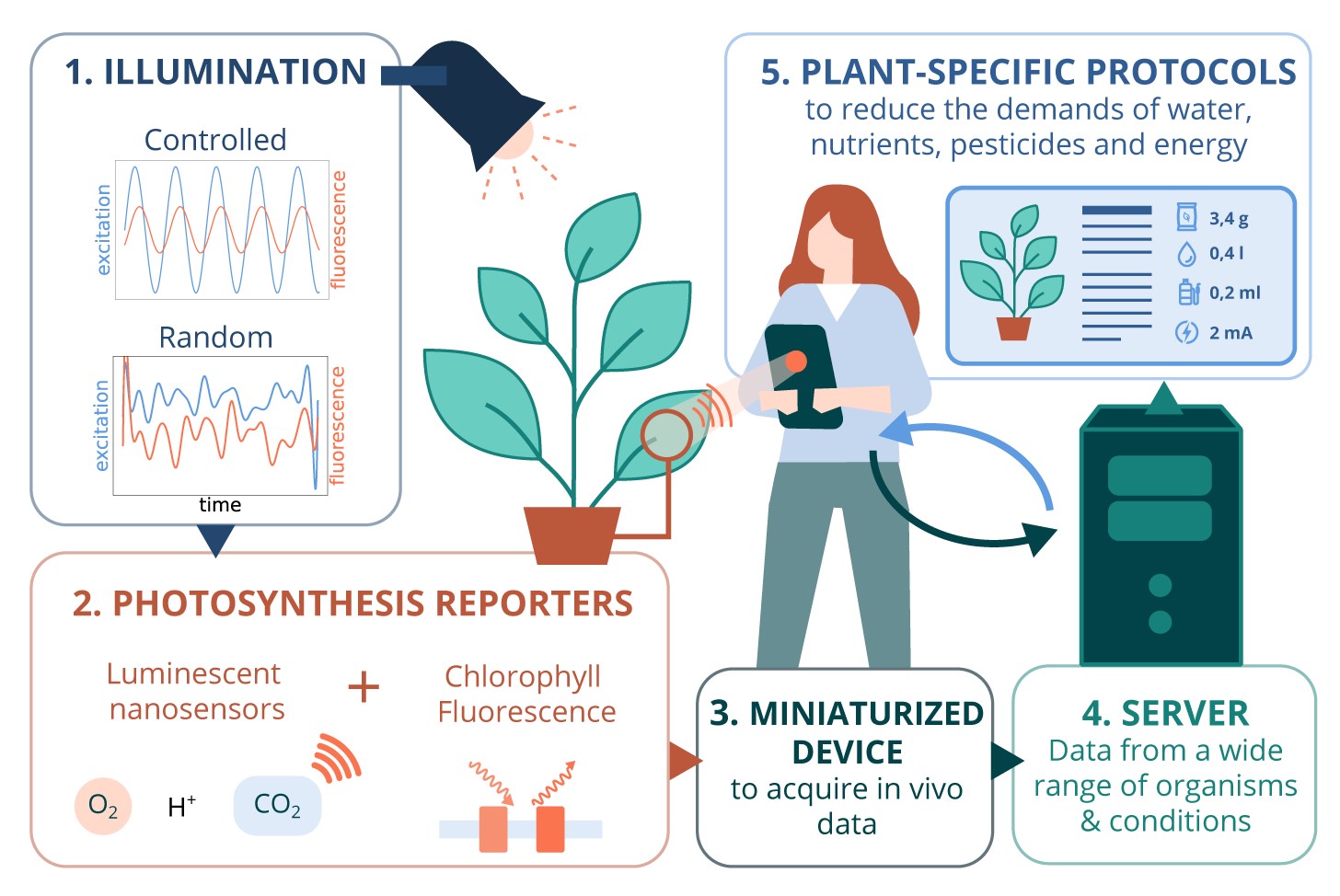Feeding the world population while preserving natural resources: the DREAM project becomes reality!
The EU-funded project DREAM aims to reduce the environmental impact of agriculture by introducing innovative technologies that sense and adapt to the needs of photosynthetic organisms. By studying the dynamics of photosynthesis regulation, in 5-years, DREAM aims to introduce innovative tools in lighting, sensing, and data processing in agriculture and to promote optimised production in controlled environments such as greenhouses, vertical farms, and indoor gardens.
Today, the agricultural sector is facing increasing pressures: feed a growing world population while reducing environmental impact and preserving natural resources. Innovative technologies can improve resource management, e.g., by ensuring that photosynthetic organisms receive what they need for optimum health and productivity, avoiding unnecessary consumption.
The EU-funded project DREAM (dream-eic.eu) proposes science-based technologies that study plant needs and provide cultivation protocols to optimize indoor production.
Starting in 2022, the DREAM researchers will study and exploit the complex network of processes that regulate photosynthesis. Photosynthetic organisms respond to and cope with various environmental factors, including temperature, drought, CO2 concentration, and light quality and quantity. Thanks to recent scientific advances, the static and simplified view of photosynthesis regulation has given way to a more complex and dynamic one, in which plants and algae respond in non-trivial ways to external stresses. According to DREAM coordinator, Ludovic Jullien, Professor of Chemistry at Sorbonne Université and Ecole Normale Supérieure “Knowing and mastering the dynamics of photosynthesis regulation will help assess and optimise the demand of resources and energy in agriculture.”
DREAM, awarded € 3M, is one of the 39 projects selected for funding from 403 submitted in the first ever EIC Pathfinder Open, designed to support high-risk/high-gain interdisciplinary projects in any field of science and technology.
The Consortium, composed of two research organizations (The French National Centre for Scientific Research and Forschungszentrum Jülich), two academic institutions (Palacký University Olomouc, Technical University Eindhoven) and two SMEs (INsociety and SONY EUROPE BV), brings together expertise at the interface of biology, physics and chemistry and combines innovative research on plant and algae with technical skills in machine learning, optics, selective sensing, and electrical engineering.
Within five years, DREAM researchers will develop new sensors to interrogate plants and algae under natural-like light and retrieve detailed data on their photosynthetic performance. With this new knowledge, it will be possible to design modulated lighting tools that adapt the energy supply to the plant needs and customised protocols that reduce the use of water, nutrients, and pesticides.
DREAM scientists will validate the new tools in the laboratory and greenhouse on three organisms: the green alga C. reinhardtii, the model plant A. thaliana, and the tomato. Later data acquisition will be extended to other users working on a wide variety of algae and plants; the collection will help refine data interpretation and provide increasingly reliable plant management protocols for growers.
In the long term, the DREAM project aims to improve indoor cultivation so that, in addition to protecting from outdoor harsh elements, it recreates an ideal environment for growing plants and microalgae without wasting resources. DREAM smart sensing can boost controlled environment agriculture, reducing its demand for energy and labour and making it a sustainable practise to overcome climate change’s effects.

